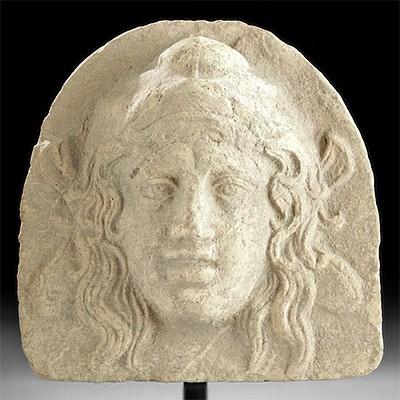1950s Japanese Woodblock Prints by Okuyama (3)
Lot 121g
About Seller
Artemis Gallery
686 S Taylor Ave, Ste 106
Louisville, CO 80027
United States
Selling antiquities, ancient and ethnographic art online since 1993, Artemis Gallery specializes in Classical Antiquities (Egyptian, Greek, Roman, Near Eastern), Asian, Pre-Columbian, African / Tribal / Oceanographic art. Our extensive inventory includes pottery, stone, metal, wood, glass and textil...Read more
Categories
Estimate:
$600 - $900
Absentee vs Live bid
Two ways to bid:
- Leave a max absentee bid and the platform will bid on your behalf up to your maximum bid during the live auction.
- Bid live during the auction and your bids will be submitted real-time to the auctioneer.
Bid Increments
| Price | Bid Increment |
|---|---|
| $0 | $25 |
| $300 | $50 |
| $1,000 | $100 |
| $2,000 | $250 |
| $5,000 | $500 |
| $10,000 | $1,000 |
| $20,000 | $2,500 |
| $50,000 | $5,000 |
| $100,000 | $10,000 |
| $200,000 | $20,000 |
About Auction
By Artemis Gallery
Feb 27, 2020
Set Reminder
2020-02-27 10:00:00
2020-02-27 10:00:00
America/New_York
Bidsquare
Bidsquare : VARIETY SALE | Antiquities & Ethnographic Art
https://www.bidsquare.com/auctions/artemis-gallery/variety-sale-antiquities-ethnographic-art-4920
Around the world & back in time - be amazed at the treasures you will find. Antiquities from Egypt, Greece, Italy and the Near East, Asian, Pre-Columbian, African / Tribal / Oceanic, Native American, Spanish Colonial, Russian Icons, Fine Art, much more! Artemis Gallery info@artemisgallery.com
Around the world & back in time - be amazed at the treasures you will find. Antiquities from Egypt, Greece, Italy and the Near East, Asian, Pre-Columbian, African / Tribal / Oceanic, Native American, Spanish Colonial, Russian Icons, Fine Art, much more! Artemis Gallery info@artemisgallery.com
- Lot Description
Gihachiro Okuyama (Japanese, 1907-1981). Three woodblock prints, Showa Period, ca. 1950s, each has Okuyama's artist stamp. A wonderful trio of Sumizuri-e woodblock prints by mid-century Japanese artist Gihachiro Okuyama. One woodblock depicts people arriving ashore via ferry. The ferry crossing is called the Yagiri no Watashi and has connected Shibamata and Matsudo city in Chiba prefecture for the past 400 years. This scene is one of the 100 Landscapes of Japan that represented Japan during the Heisei era. The idyllic atmosphere is largely credited to the 1906 novel from Sachio Ito entitled Nogiku no Haka (The Wild Daisy) which was made into movies in 1955, 1966 and in 1981. The other two scenes present workers in the picturesque rice fields, one with figures crossing a bridge. Okuyama's technique of monochromatic woodblock printing (only using black ink) is the earliest type of Japanese woodblock printing and dates all the way back to the Nara period (710-794). A lovely ensemble, set in matching framing under glass. Size: 12.625" W x 7.875" H (32.1 cm x 20 cm) framed
Gihachiro Okuyama studied art under Kasaka Gajin and was active in both the Sosaka Hanga and Shin Hanga movements. Okuyama established the Japan Print Institute (Nihon Hanga Kenkyusho) in 1946 and created beautiful woodblock prints like these examples for the rest of his life.
Provenance: private Vero Beach, Florida, USA collection
All items legal to buy/sell under U.S. Statute covering cultural patrimony Code 2600, CHAPTER 14, and are guaranteed to be as described or your money back.
A Certificate of Authenticity will accompany all winning bids.
We ship worldwide and handle all shipping in-house for your convenience.
#152474All are set in matching custom mats and frames under glass. Minor scuffs to the frames as shown. Artist's chop is visible in each woodblock print. These woodblocks have not been examined outside the frames, but appear to be in very good condition save some expected toning and waviness. Old labels on verso as shown.Condition
- Shipping Info
-
All shipping is handled in-house for your convenience. Your invoice from Artemis Gallery will include shipping calculation instructions. If in doubt, please inquire BEFORE bidding for estimated shipping costs for individual items.
-
- Buyer's Premium



 EUR
EUR CAD
CAD AUD
AUD GBP
GBP MXN
MXN HKD
HKD CNY
CNY MYR
MYR SEK
SEK SGD
SGD CHF
CHF THB
THB



















